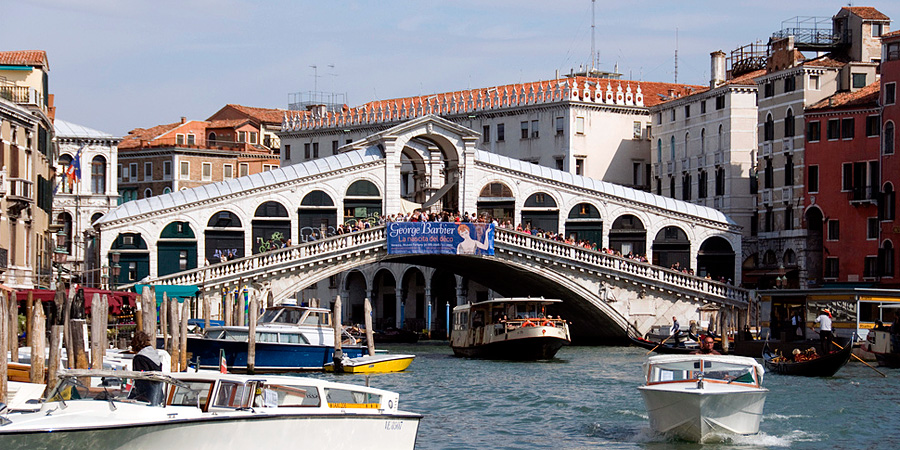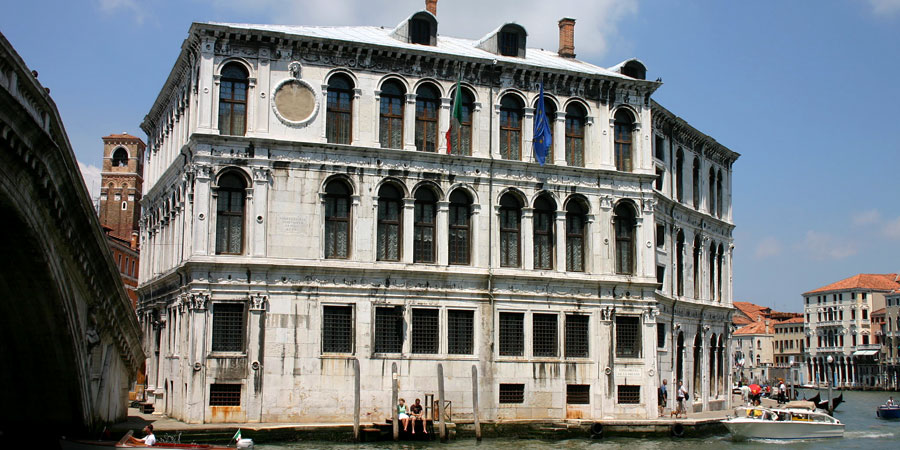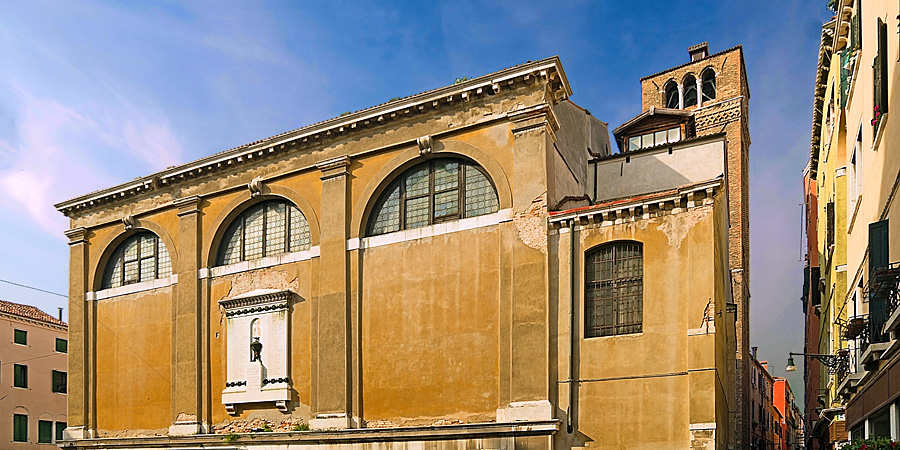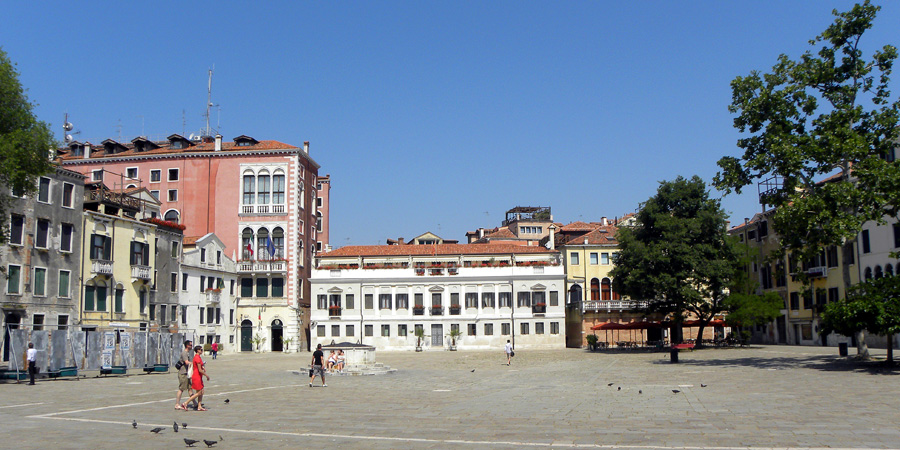San Polo is the smallest of the six sestieri of Venice, covering 35 hectares along the Grand Canal. It is one of the oldest parts of the city, having been settled before the ninth century, when it and San Marco formed part of the Realtine Islands. The sestiere is named for the Church of San Polo.
The district has been the site of Venice's main market since 1097, and connected to the eastern bank of the Canal Grande by the Rialto bridge since the thirteenth century. The western part of the quarter is now known for its churches, while the eastern part, sometimes just called the Rialto, is known for its palaces and smaller houses. Attractions in San Polo include the Rialto Bridge, the Church of San Giacomo di Rialto (according to legend the oldest in the city), the Campo San Polo, the House of Goldoni, the Church of Santa Maria Gloriosa dei Frari, the Church of San Rocco and the Scuola Grande di San Rocco.
Rialto Bridge

The Ponte di Rialto is the oldest bridge and spans the Grand Canal. It probably dates back to 1172 and was originally in wood. In 1557 the Venetian Republic put out a tender for rebuilting the bridge in stone. The architects who competed for the tender includes Palladio and Sanmichieli. The tender was awarded by Antonio da Ponte.
In 1591 the bridge was inaugurated. The engineering of the bridge was considered so audacious that architect Vincenzo Scamozzi predicted future ruin. The bridge has defied its critics to become one of the architectural icons of Venice. It is crowned by a double row of small shops, with larger central arches allowing pedestrians to pass from the central shopping lane to the panoramic external staircases.
Palace of Camerlenghi

The Palazzo dei Camerlenghi is located on the right of Rialto Bridge, the palace derives its name from the Camerlenghi, officials who were responsible for raising revenue for the Venetian Republic. The ground floor contained the cells of the tax evaders. The palace has a pentagonal plan which follows the shore of the Canal Grande, with three floors.
It has tall windows with centrings, divided by false columns and decorated with friezes. Due to the Venetian tradition that, when leaving the position, a magistrate would leave a religious-themed painting and a portrait in his former seat, the Palazzo dei Camerlenghi housed numerous artworks. These were dispersed during the French occupation; some returned to Venice, but are now in other locations.
Church of San Giacometto

The Chiesa di San Giacomo di Rialto is perhaps the oldest church in Venice. It is still laid out in the form of a Greek cross. Opposite, we have the Gobbo di Rialto which was built by Pietro da Salò in 1541. Next to it, there is the Pietra del bando from which the decrees of the Venetian Republic were read out.
This was the commercial heart of Venice, where merchants met to hammer out their agreements and where the Banco Giro was located. This bank was already in existence in the twelfth century and enabled credit to circulate. Interesting the outside with the bell tower, the big clock (useful to the market, which is located at the front) and the gothic porch, one of the last examples in the town.
The Fabbriche Nuove

In Campo della Pescaria, on the Grand Canal, is the home of the Fabbriche Nuove. A Renaissance building, designed by Jacopo Sansovino in 1555, with the long body porch that follows the structure of the Fabbriche Vecchie. Originally housed the Venetians magistrates who kept watch on the operations of Rialto.
It is a long porch complex that incorporate the architecture of the old factories were rebuilt by the Scarpagnino after the devastating fire that occurred in the area of the financial center in 1514. With the Fabbriche Nuove ends the reconstruction of the Rialto area and they defines the front of the Grand Canal. Currently the Fabbriche Nuove are the seat of the Court.
Church of San Aponal

The Chiesa di Sant'Aponal was founded in the 11th century, by refugees from Ravenna and dedicated to St Apollonaire. Restored over the centuries, it underwent major reconstruction in the 1400s. During the Napoleonic occupation, it was deconsecrated and only reconsecrated in 1851.
For a time it was used as a prison for political prisoners. It was re-closed in 1984, and is now mainly an archive. The façade retains the original Gothic features, such as the bell tower. The façade was adorned with a marble decoration returned to her original home of the Chiesa di Sant'Elena after its reactivation.
Church of San Cassiano

The Chiesa di San Cassiano has stood on the site since 726 with the present building dedicated to Saint Cassian of Imola being consecrated in 1376 and re-modelled during the 17th century. It has a plain exterior with several adjacent buildings overlapping it. Its interior however is richly decorated in a Baroque style
The church houses three paintings by the Italian artist Tintoretto, including The Crucifixion of Christ painted in 1568. The San Cassiano altarpiece, painted for this church by Antonello da Messina, was the first major example of oil painting in the city. It disappeared from the church in the 17th century and was cut into sections; the remaining known pieces are re-united in Vienna.
San Polo Square

The Campo San Polo is the largest campo in Venice, the second largest Venetian public square after the Piazza San Marco. Campo San Polo gives its name to the district. It was given its present appearance in 1750 when Sant'Antonio canal was filled in. The palazzi that surround it offer a fine view.
Races, bullfights and masked carnival balls were held here, also used for open air concerts and screenings during the Venice Film Festival. In 1548 there was assassinated Lorenzino de Medici, stabbed by two assassins in the service of Cosimo de Medici. According to the theory of the Roman origin of Venice, Campo San Polo would have been the city's Roman amphitheater.


